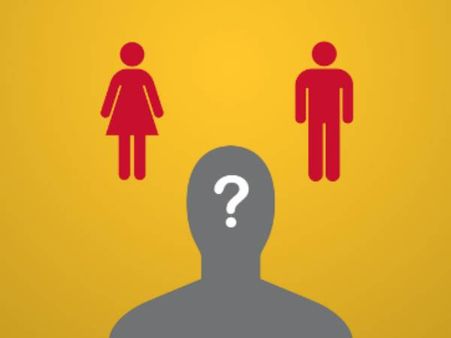Just In
- 5 hrs ago

- 14 hrs ago

- 16 hrs ago

- 17 hrs ago

Don't Miss
- Education
 JEE Main Result 2024 Out, Telangana's 15 Toppers Shine, Check Statewise List of 56 Candidates with Perfect 100
JEE Main Result 2024 Out, Telangana's 15 Toppers Shine, Check Statewise List of 56 Candidates with Perfect 100 - Sports
 Who Won Yesterday's IPL Match 40? DC vs GT, IPL 2024 on April 24: Delhi Capitals Clinch High-Scoring Thriller At Kotla
Who Won Yesterday's IPL Match 40? DC vs GT, IPL 2024 on April 24: Delhi Capitals Clinch High-Scoring Thriller At Kotla - News
 Mangalsutra Row: Did Indira Gandhi Donate Gold During The 1962 War? The Facts Behind Priyanka's Claim
Mangalsutra Row: Did Indira Gandhi Donate Gold During The 1962 War? The Facts Behind Priyanka's Claim - Movies
 Kota Factory 3 OTT Release Date, Platform: When Will Jitendra Kumar's Web Series Premiere On Netflix?
Kota Factory 3 OTT Release Date, Platform: When Will Jitendra Kumar's Web Series Premiere On Netflix? - Travel
 Escape to Kalimpong, Gangtok, and Darjeeling with IRCTC's Tour Package; Check Itinerary
Escape to Kalimpong, Gangtok, and Darjeeling with IRCTC's Tour Package; Check Itinerary - Finance
 DCB Bank Q4 Results: PAT Grew 9% To Rs 156 Cr, NII Jumps 4.5%; Dividend Declared
DCB Bank Q4 Results: PAT Grew 9% To Rs 156 Cr, NII Jumps 4.5%; Dividend Declared - Technology
 OPPO Find X7 Ultra Camera Deep-Dive: Pushing the Boundaries of Photography on a Smartphone
OPPO Find X7 Ultra Camera Deep-Dive: Pushing the Boundaries of Photography on a Smartphone - Automobiles
 Aston Martin Vantage Launched In India At Rs 3.99 Crore
Aston Martin Vantage Launched In India At Rs 3.99 Crore
Gender Dysphoria And Mental Health: Know More About The Symptoms And Treatments
Gender dysphoria, also known as gender identity disorder is characterised by a persistent feeling of discomfort or distress caused due to the mismatch of biological gender and internal sense of gender.
For example, a person with male body parts ( penis and beard) does not truly identify themselves as male or the one with a female body feels like a male from inside.
The mismatch between the biological gender and internal sense of gender is actually not a mental condition. But, the feeling of discomfort, anxiety, depression and restlessness that comes with gender dysphoria are diagnosed on Diagnostic and Statistical Manual of Mental Disorders (DSM-5), a set of criteria to diagnose a mental condition. Take a look at the details.


What Are The Symptoms Of Gender Dysphoria?
Gender dysphoria can be realised at any age. Usually, it starts during childhood and adolescence. Some people may also experience it at a later stage of life. People with gender dysphoria have a strong desire to be their own self, which is different from their primary gender and also want others to treat them accordingly.
However, due to social, family, occupational or other pressure, they fear to be out with their true self, and this brings in them a feeling of distress, discomfort, anxiety and depression. Other symptoms also include:
- Social withdrawal
- Feeling of isolation
- Low self-esteem
- Eating disorders
- Substance abuse
- Self-harm
- Suicidal thoughts


Mental Health And Gender Dysphoria
Gender dysphoria affects the day-to-day life of a person. No matter what they do, the pressure of doing things according to their physical gender type or fear of being teased is persistent
As aforementioned, gender dysphoria mainly starts during childhood. Let's take an example. If a male child is interested in playing with the toys of female children, the family or the society will consider it an inappropriate thing and explain to him what toys are meant for boys and what for girls and will also expect him to like things that are attributed to being a male in the society.
The pressure to behave like the assigned gender type is expected to behave and not being able to express their true gender type will bring sadness and feeling of guilt. While growing up, they may experience other restrictions on their choices and this may worsen their symptoms.
Soon, a person with gender dysphoria may start hating themselves due to the conflict between their inner self and assigned gender. Such children or adults are at increased risk of suicides due to the fear of discrimination and stigma.


Treatments
- Counselling: It includes both the family as well as individual counselling. It helps explore the true gender identity which is comfortable to the person with gender dysphoria and also help them deal with stress or anxiety that have developed due to social stigma. In family counselling, members of the family are educated about gender dysphoria with focus on that it is not a disease or medical condition.
- Surgery: It includes the changing of genitals or other physical characteristics according to ones true sense of gender. It includes removal or adding breasts, removal or adding of facial hairs and other body contouring surgeries.
- Behavioural therapy: It includes teaching ways to explore one's gender identity and deal with day-to-day gender identity problems so that one can get comfortable with their true identity and develop confidence and self-esteem. This therapy is mainly to improve the quality of life of a person.


To Conclude:
Not everyone with gender dysphoria seeks the help of medical treatment. In today's scenario, there are several laws, education rights and affordable medical access provided to people who belong to the LGBTQ community (lesbian, gay, bisexual, transgender and queer). These rights have allowed people with gender dysphoria to come out confidently and accept their true gender identity. However, many parts of the world still consider gender dysphoria as a crime and due to social pressure, the risk of suicides or mental illness among these people is always high.
People should learn to accept that gender dysphoria is not a choice and not a disease.

-
 lgbtqLaxmmi Bomb – In Which The Real Horror Is The Superficial Depiction Of Trans Lives
lgbtqLaxmmi Bomb – In Which The Real Horror Is The Superficial Depiction Of Trans Lives -
 pregnancy parentingMyths vs Facts: Can Belly Shape In Pregnancy Predict Baby's Gender?
pregnancy parentingMyths vs Facts: Can Belly Shape In Pregnancy Predict Baby's Gender? -
 insyncIndia's Battle With Hunger: How Gender Gap, Food Loss, Wastage And Poverty Are Fuelling The Food Crisis
insyncIndia's Battle With Hunger: How Gender Gap, Food Loss, Wastage And Poverty Are Fuelling The Food Crisis -
 womenSurvey Reveals Women Have To Compromise Between Career, Family And Relationships In A Way Men Don't
womenSurvey Reveals Women Have To Compromise Between Career, Family And Relationships In A Way Men Don't -
 womenMeet Radha Vembu: Here's What You Need To Know About Self-Made Third Richest Woman Billionaire In India
womenMeet Radha Vembu: Here's What You Need To Know About Self-Made Third Richest Woman Billionaire In India -
 lgbtqWhat Is Heteroflexiblity? What It Means To Identify As Heteroflexible? Know The Indentifiable Signs
lgbtqWhat Is Heteroflexiblity? What It Means To Identify As Heteroflexible? Know The Indentifiable Signs -
 lgbtqTen Queer Women Icons Who Made History And Changed The World For LGBTQ+ Community
lgbtqTen Queer Women Icons Who Made History And Changed The World For LGBTQ+ Community -
 womenNational Girl Child Day 2023: Top 10 Central Government Schemes For Girl Child In India
womenNational Girl Child Day 2023: Top 10 Central Government Schemes For Girl Child In India -
 lgbtqWant To Support LGBTQ Youths? Things You Can Do To Help Them
lgbtqWant To Support LGBTQ Youths? Things You Can Do To Help Them -
 womenDating Trend 'Consciously Single' Is Becoming Popular With Indian Women: Study Reveals Why!
womenDating Trend 'Consciously Single' Is Becoming Popular With Indian Women: Study Reveals Why! -
 menHousehusbands: Pros And Cons When It Comes To Role Reversal
menHousehusbands: Pros And Cons When It Comes To Role Reversal -
 art cultureWomen's Equality Day 2022: Indian Movies On Equality And Empowerment
art cultureWomen's Equality Day 2022: Indian Movies On Equality And Empowerment


 Click it and Unblock the Notifications
Click it and Unblock the Notifications




